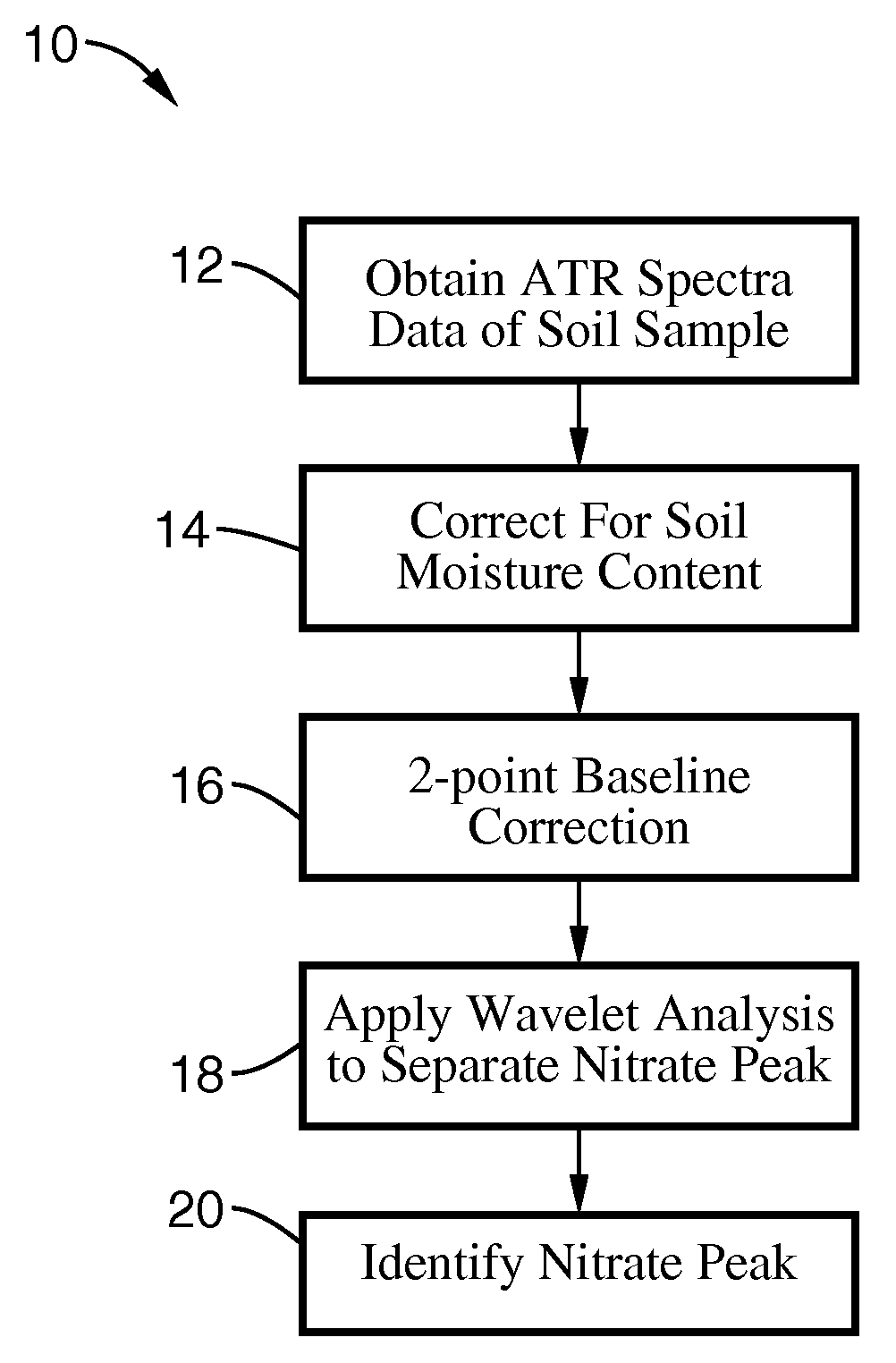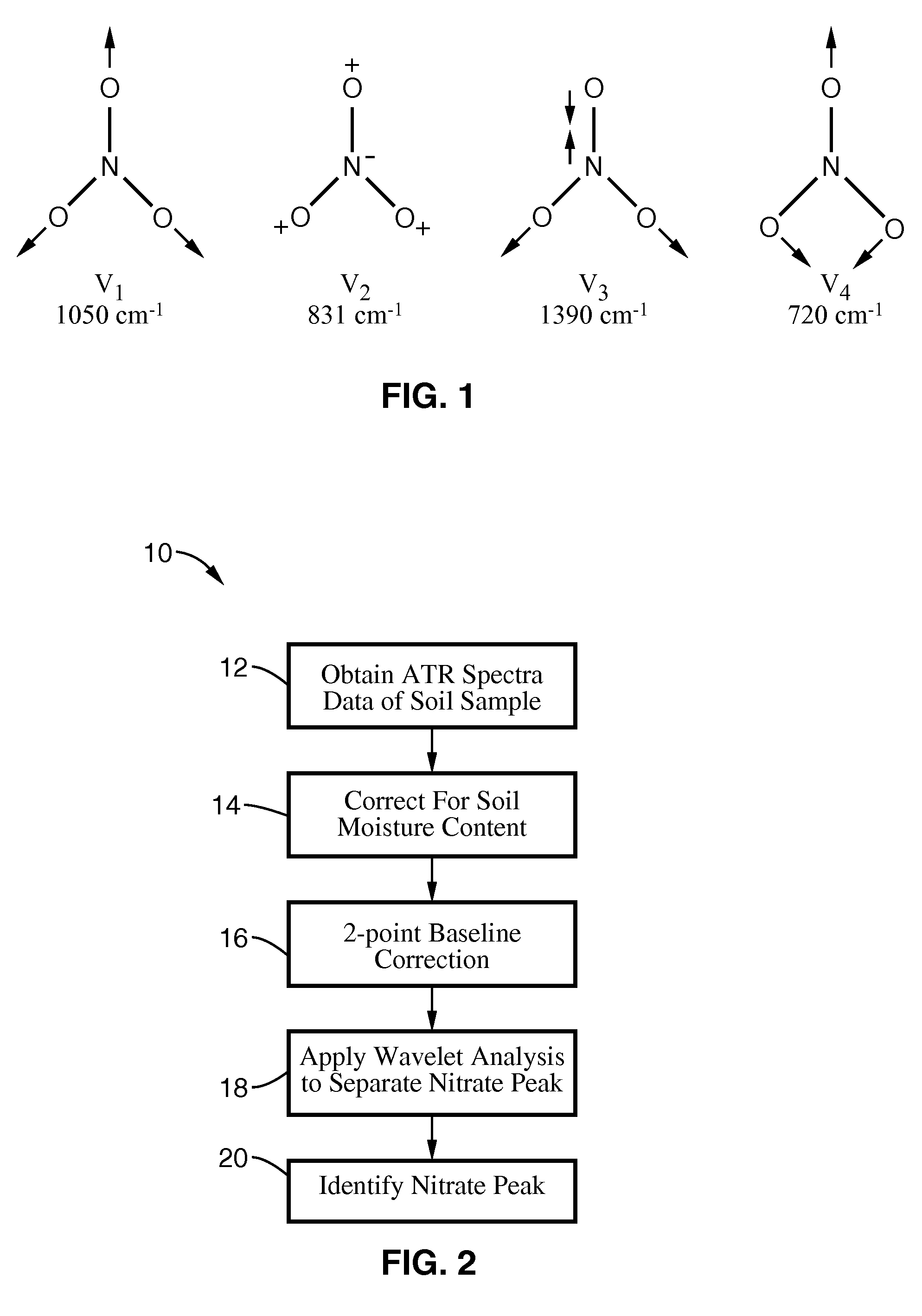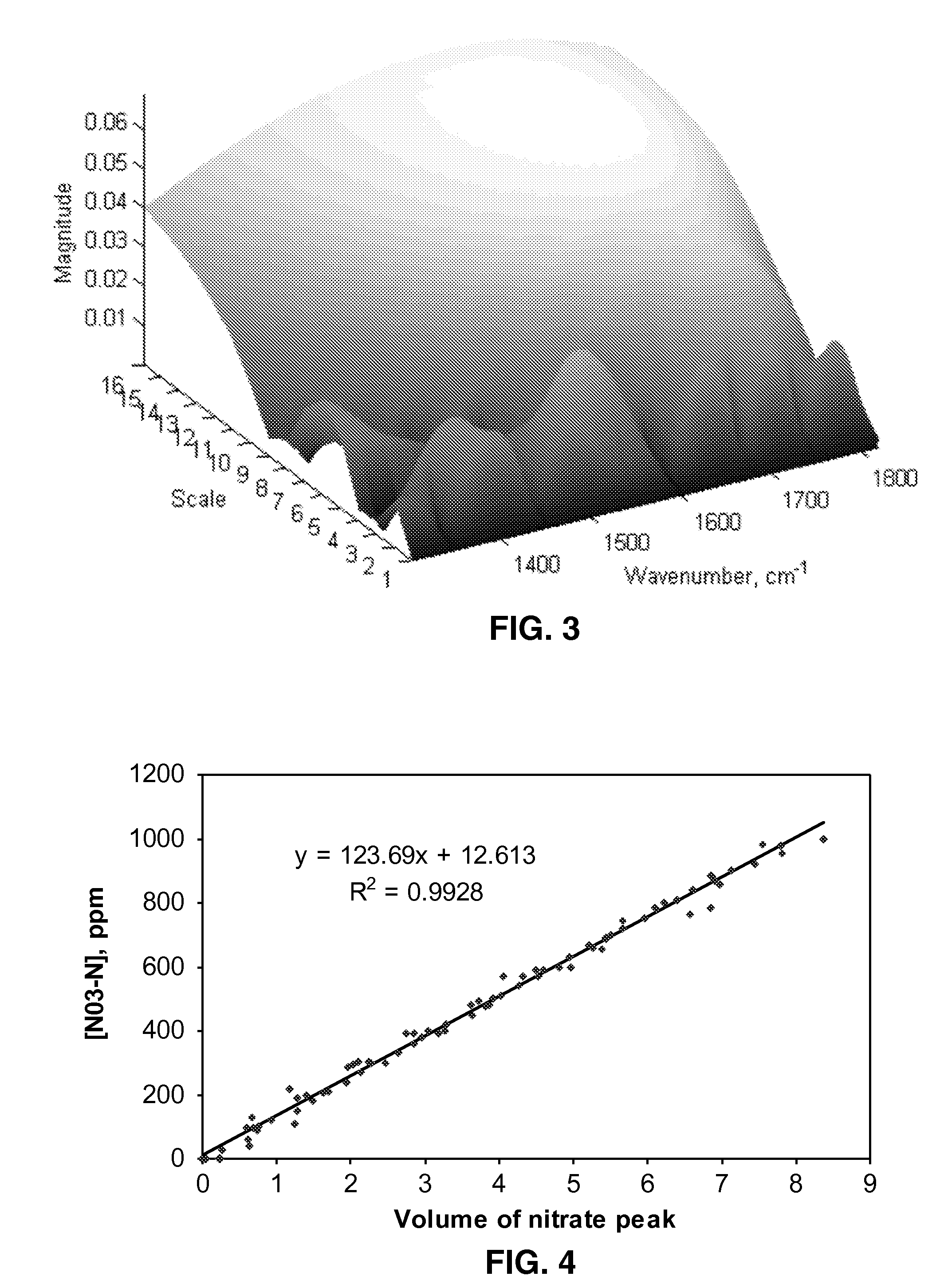Method for soil content prediction based on a limited number of mid-infrared absorbances
a technology of infrared absorbance and soil content, applied in the field of insitu detection of soil properties, can solve the problems of inability to accurately and easily use soil sensors to gather lack of inexpensive yet accurate methods of gathering information about a field, and significant amount of time and labor
- Summary
- Abstract
- Description
- Claims
- Application Information
AI Technical Summary
Benefits of technology
Problems solved by technology
Method used
Image
Examples
experiment # 1
2. EXPERIMENT #1
[0092] (a) Test Setup
[0093] Two separate tests were performed to obtain FTIR / ATR soil spectra: one laboratory procedure in Israel (soil types used in Linker et al.), and a field test in California.
[0094] The Israel included sandy loam, peat and clay soils, with varying levels of carbonate and organic matter. The texture and carbonate related information for these soils can be found in Table 1. The soils were pre-treated first by oven drying (120° C.) for 24 hours. Nitrate varying in concentration from 0 to 1000 ppm NO3—N was added in the form of KNO3. Distilled water was then added to form a paste. The first three soils listed in table 1 were known to be calcareous, which meant that they contained large amounts of carbonate. Carbonate has a fundamental vibrational frequency close to that of the nitrate peak at 1390 cm−1, which presents some interference issues when trying to estimate nitrate concentration.
[0095] Wavelet analysis was also applied to field soils con...
experiment # 2
3. EXPERIMENT #2
[0121] An objective of this experiment was to investigate the applicability of a nitrate calibration equation developed using FTIR / ATR spectroscopy to predict nitrate concentrations in a grower's field. A further objective was to investigate the applicability of a fixed-filter spectrometer (e.g. rugged and inexpensive—without moving lenses or mirrors) capable of being used in a field environment for determining soil constituents such as nitrate, phosphorus, and organic matter content.
[0122] (a) Test Setup
[0123] Four fields were used, having the following soil types: Yolo loam, Capay clay, Rincon silty clay loam, and Sycamore silty clay loam. A repeated-measures approach was followed in which soil samples were obtained over four sampling periods. These sampling periods were chosen to represent the variation in nitrate contents the tomato plants were exposed to during a critical, approximately month-long growing period, and thus the range of nitrate contents of inter...
PUM
 Login to View More
Login to View More Abstract
Description
Claims
Application Information
 Login to View More
Login to View More - R&D
- Intellectual Property
- Life Sciences
- Materials
- Tech Scout
- Unparalleled Data Quality
- Higher Quality Content
- 60% Fewer Hallucinations
Browse by: Latest US Patents, China's latest patents, Technical Efficacy Thesaurus, Application Domain, Technology Topic, Popular Technical Reports.
© 2025 PatSnap. All rights reserved.Legal|Privacy policy|Modern Slavery Act Transparency Statement|Sitemap|About US| Contact US: help@patsnap.com



